Table of Contents
- 1. Travel and Holidays
- 2. Health and Hygiene
- 3. Family, Market and Public Places
- 4. Life and Death
- 5. Ethics, Norms and Values
- 6. Custom and Culture
- 7. Ecology and Environment
- 8. Science and Technology
- 9. Science and Technology
- 10. The Earth and Space
- 11. Gadgets and Instruments
- 12. People and Places
- 13. Organization Profile and Authority
- 14. History and Civilization
- 15. People and Lifestyle
- 16. Games and Sports
- 17. Global Warming & Climate Change
- 18. Transportation & Communication
- 1. Current Affairs & Issues
- 2. Festivals & Celebration
- 3.Health & Wellness
- 4. Work & Leasure
- 5. Science & Experiments
- 6. Food & Cuisine
- 7. Cyber Security
- 8. Hobbies & Interest
- 9. History & Culture
- 10. Games & Sports
- 11. Ethics & Morality
- 12. Nature & Development
- 13. Population & Migration
- 14. Travell & Adventure
- 15. People & Places
- 16. Success & Celebration
- 17. Countries & Towns
- 18. Media & Entertainment
- 1. Language Development
- 2. Literature Development
- 3. Model Questions
- 4. References

Problem of Unemployment in Nepal – An Essay
The problem of unemployment in nepal – an essay.
Nepal has to face many problems and one of these is the problem of unemployment. The whole world is facing this problems but Nepal is one of the worst sufferers. The number of the unemployed is always on the increase. The government is finding it difficult to solve however the policies developing by government has shown little light in the field of employment. The current situation of job market and contemporary belief system of labor are the major causes for unemployment. The condition of health and safety measures does not supporting in Nepalese context for lower graded job along with the payment. The spreading pandemic of COVID-19 possibly hampers the Nepalese job market in the near future.
Unemployment means lack of work for those who are willing to work. It means compulsory leisure to some, when others are over-worked. Both the educated and the uneducated have suffered and are still suffering from unemployment. There is unemployment in the skilled as well as unskilled people and some people are intentionally unemployed as they don’t have sense of respect in working in low paying sectors. In some cases the skill of people is not utilized because of opportunities.
There are many reasons for unemployment. The population is increasing rapidly. The factory system is killing cottage industries. Manual workers cannot find jobs. Nepal migrant workers sent $8.1 billion in 2018 marking if the 19 th biggest beneficiary of funds sends by migrants around the world, according to the report released by World Bank. The remittances were up to 16.39 percent year on year deposit a drop in the number of departures. The population of Nepal represents 0.44 percent of the world’s total population which arguably means that one person in every 229 people on the planet is a resident of Nepal, where as the unemployment nation is 3.20 to 4.50. It shows the incensement in population the chance or incensement in unemployment is possible in future.
Nepal has secured the top spot in job creation in South Asia with employment rate hovering around 68 percent says the latest world bank report. This means 32 percent of the country’s working age population people aged 15 to 64 is either unemployed or voluntarily inactive the lowest in south Asia. The major cause of unemployment in Nepal is respect to the profession. Nepalese people are ready to risk their lives in overseas where as they don’t like to invest time in Nepal for similar pay. On the other hand the employment problem has been correspondence to the currency value is somehow similar the pay which manpower receives differs in various countries.
Our system of education is defective. It produces only clerks who are feeling shame of doing small jobs. Nepal is an agricultural country but no one wants to do the farming and to live in village. All want to rush towards cities. The life of a farmer is looked down upon. So, there is rush for government service in cities and towns. Parents send their sons and daughters to school and collages in order to enable them to get a good job after education. so, there is a rush of candidates before offices. Very few candidates get into them while others remain unemployed.
The big number of youth has been returned to Nepal from different foreign country because of covid-19. The pandemic has snacked the opportunity of employment inside the population which was employed in overseas is returned to the country. In this situation, we can guess the situation of employment in Nepal in the near future. Our government is trying to solve this problem. Technical and vocational colleges are being opened. Cottages and handloom industries are being encouraged. Every effort is being made for family planning to control population. Irrigation and multipurpose projects are multiplying fast.
But there is still much to be done. The first things to be done are to being about a complete change in the outlook of our young men and women. For this our educations system should be greatly changed. They are to be taught the dignity of labour that they may leave their love for clerical jobs. They must feel attracted towards manual labour, farming and doing things in small cottage industries of their own. Only then the problem can be solved to a great extent.
Post a Comment
Oops no internet.
Looks like you are facing a temporary network interruption. Or check your network connection.
Subscribe us
Please subscribe our YouTube channel to grow our cummunity and support us
Ad-Blocker Detected :(
Sorry, we detected that you have activated Ad-Blocker. Please consider supporting us by disabling your Ad-Blocker and refresh the page, it helps us in developing this Site. Thank you for understanding :)
- Culture & Lifestyle

- Madhesh Province
- Lumbini Province
- Bagmati Province
- National Security
- Koshi Province
- Gandaki Province
- Karnali Province
- Sudurpaschim Province
- International Sports
- Brunch with the Post
- Life & Style
- Entertainment
- Investigations
- Climate & Environment
- Science & Technology
- Visual Stories
- Crosswords & Sudoku
- Corrections
- Letters to the Editor
- Today's ePaper
Without Fear or Favour UNWIND IN STYLE

What's News :
- Cooperatives scam
- UML cheif Oli criticises budget
- Hardships from border disputes
- Maize in drought-hit hills
- Spice ban: MDH& Everest
The burden of unemployment

A recent Nepal Rastra Bank survey which looked into the effects of Covid-19 on Nepal’s economy showed that tens of thousands of people were rendered jobless during the four-month-long lockdown while there was a massive disruption in the production and supply chain as 61 percent of businesses shut their operations completely. The survey, which covered 52 districts involving 674 industries, business ventures and start-ups, reported that small and medium scale enterprises and early-stage start-ups were among the worst hit while 77.2 percent of the businesses did not have the cash flow to pay employee salaries besides other fixed expenditures.
The survey also showed that 22.5 percent of employees were laid off by businesses, including in the manufacturing and service sectors, two-thirds of whom were under contract basis or were hired on a temporary basis. The largest layoffs were in the hotel and restaurant sector, followed by small and medium scale enterprises which laid off 30.5 percent of their employees. The survey also reports that on average, industries and businesses trimmed 18.2 percent of their payroll. However, the average pay cut by big businesses was 22.5 percent against a 13.6 percent cut by medium businesses.
For an already bleak reality, re-imposed lockdown and prohibitory orders amid the deteriorating Covid-19 situation in the country is only increasing our challenges which, if not dealt with urgently, could embroil the country in socio-economic and political issues. There is little foresight on how and when the current situation will evolve to our advantage, and youths, especially in rural Nepal, have started to leave for India in search of jobs. This has raised a big question on the employment schemes that have been rolled out by the government to absorb the labour force at home, especially when the country expects more returnees from migrant destination countries given the pandemic.
While the challenges keep getting bigger, the symptoms, however, are not new. Unemployment remains one of the biggest problems in Nepal, which has forced hundreds of thousands of Nepali youths in the past decades to migrate in search of livelihood opportunities, often in dangerous and slave-like conditions. While none of the political leadership to this day has been able to commit to its promises to create jobs, the Oli administration’s Prime Minister Employment Programme has also failed to create jobs and meet its targets, two years since its inception.
This fiscal year, as part of the programme, the government aimed to create a minimum of 100 days of wage employment jobs for some 200,000 people, but there are no jobs at the local level. Even the outgoing finance minister Yuba Raj Khatiwada repeatedly said that the domestic workforce could replace foreign workers involved in various sectors, but the much touted employment programme, which has instead drawn criticism for taking loans for its implementation, has failed and the budget allocated for the programme remains unspent.
Earlier this year, the government had doubled the programme’s budget to Rs11.6 billion and in July, the Labour Ministry had also received a soft loan of approximately Rs14 billion from the World Bank to implement the five-year Youth Employment Transformation Initiative under the programme, but it has not shown any credible results while nothing has changed for Nepalis who continue to migrate to India or are seeking labour permits or seats on the next flight out.
Desperate times call for desperate measures. We cannot afford off-and-on lockdowns and prohibitory orders which directly affect the economy, and as a result, employment opportunities. Reopening the economy, given the public health crisis of this scale, depends on how swiftly we expand testing and contact tracing to break the chain of transmission of the virus. The government must rise to this challenge and launch a massive testing programme, together with antibody testing. It must also launch a nationwide behavioural change campaign to instil precautionary measures against the coronavirus. This is the only way to reopen the economy and create jobs and safeguard them.
What do you think?
Dear reader, we’d like to hear from you. We regularly publish letters to the editor on contemporary issues or direct responses to something the Post has recently published. Please send your letters to [email protected] with "Letter to the Editor" in the subject line. Please include your name, location, and a contact address so one of our editors can reach out to you .
Read Other Opinions

Commit to truth

Eerie silence

Undrinkable

Watering grassroots

Take it easy, baby

The cry of Chure
Most read from editorial.

Off the rails

Vendetta against media

Editor's Picks

Challenges of Nepali democracy

Nepalis losing millions in illicit pursuit of ‘American dream’

Speakers are supposed to be neutral. Not all succeed in the role

Recessionary fallout on banking

7 years on, Nepal and China still at odds over BRI execution
E-paper | june 02, 2024.
- Read ePaper Online

Nepal Press
Facts First, Truth Foremost – Online News Portal from Nepal in Nepali & English Language
- # Prime Minister
- # President
- # Akhil Nepali Mahila Sangh
- # Prachanda-Madhav
- # Paris Danda

- International
- Entertainment
Youth Unemployment in Nepal: A Silent Disaster in the Making

In the land of stunning landscapes and soaring mountains, a silent crisis is haunting Nepal’s vibrant youth. As the sun rises over the breathtaking Himalayas, it illuminates a harsh reality: a growing tide of unemployment that threatens to engulf an entire generation. This write up delves deep into the pressing issue of youth unemployment in Nepal, exploring its underlying causes, devastating consequences, and, most importantly, the potential solutions that lie within our grasp.
Nepal’s youths, brimming with ambition, creativity, and determination, are facing an uphill battle in their quest for meaningful employment. The statistics paint a sobering picture: with an alarming youth unemployment rate that surpasses the national average, the country stands at a crossroads, grappling with the repercussions of a demographic dividend gone awry.
Unemployment among the young not only stifles their dreams and aspirations but also undermines the nation’s progress. Lost opportunities, wasted potential, and a sense of hopelessness permeate the air, threatening to dampen the spirit of a nation known for its resilience.
Yet, amid these dark clouds, a glimmer of hope emerges. This article seeks to shed light on the multifaceted causes behind this crisis, ranging from an inadequate education system to a lack of job opportunities and a widening skills gap. Moreover, it explores the far-reaching consequences of youth unemployment, from social unrest to economic stagnation, offering a stark reminder of the urgency to act.
Youth unemployment is a critical issue affecting many countries worldwide, including Nepal. As a developing nation, Nepal faces numerous challenges in addressing the high rate of unemployment among its youth population. By understanding the factors contributing to this issue and implementing appropriate strategies, Nepal can strive towards creating a brighter future for its young workforce.
Nepal’s overall unemployment rate has remained a concern, with the latest data indicating an unemployment rate of 10.6 percent (World Bank, 2021). However, the youth unemployment rate, which primarily affects individuals between the ages of 15 and 29, stands at a staggering 19.4 percent (Central Bureau of Statistics, 2021). This significant disparity in youth unemployment emphasizes the urgent need to address this issue effectively.
Causes of youth unemployment
- Inadequate education system: The education system in Nepal often fails to equip young individuals with the necessary skills and knowledge demanded by the job market. The curriculum may not be aligned with industry requirements, resulting in a gap between education and employability.
- Limited job opportunities: The availability of suitable jobs is a significant challenge. The Nepalese economy faces structural issues, with limited formal sector employment opportunities compared to the growing number of job seekers. This imbalance leads to high competition for a small number of positions.
- Skills mismatch: There exists a significant gap between the skills possessed by youth and the skills demanded by employers. Many young individuals lack the specific technical skills and practical experience required by industries, leading to difficulties in securing employment.
- Rural-urban divide: Disparities between urban and rural areas contribute to youth unemployment. Opportunities are often concentrated in urban centers, leaving rural youth with limited access to education, training, and employment prospects.
- Lack of entrepreneurial ecosystem: Entrepreneurship can be an alternative path for employment. However, the absence of a conducive ecosystem, including access to finance, mentorship, and a supportive business environment, hampers the growth of entrepreneurial ventures.
- Gender inequality: Gender-based discrimination and traditional societal norms affect employment prospects for young women. They often face limited opportunities, lower wages, and barriers to accessing education and training.
- Political instability and policy constraints: Periods of political instability and policy constraints can hinder economic growth and job creation. Uncertainty in governance, inadequate infrastructure, and inconsistent policies can discourage investment and business expansion.
- Migration and brain drain: The allure of better opportunities abroad leads to significant youth migration. This brain drain exacerbates the unemployment issue, as skilled individuals leave the country, creating a shortage of talent domestically.
Addressing these causes requires a comprehensive approach that focuses on improving the education system, fostering entrepreneurship, bridging the skills gap, promoting inclusive growth, and creating an enabling environment for investment and job creation.
Consequences of youth unemployment
Youth unemployment in Nepal has several consequences, which are outlined below along with examples:
- Economic consequences: Youth unemployment can hinder economic growth and development by reducing productivity and stifling innovation. When young individuals are unable to find employment, their potential contribution to the economy remains untapped. This leads to a loss of economic output and a burden on social welfare systems.
Example: A high youth unemployment rate means a large portion of the population is unable to contribute to the country’s GDP, limiting overall economic progress.
- Social unrest and discontent: Youth unemployment can lead to social unrest, dissatisfaction, and a sense of hopelessness among the unemployed youth. This can fuel social tensions, protests, and even acts of violence as frustrated individuals seek to voice their grievances.
Example: In the past, Nepal has witnessed protests and demonstrations by unemployed youth demanding better job opportunities and economic prospects.
- Poverty and inequality: Unemployment, particularly among young individuals, can perpetuate poverty and exacerbate income inequality. Without adequate employment, individuals and their families may struggle to meet basic needs, leading to a cycle of poverty and widening income disparities.
Example: High youth unemployment rates can result in a higher prevalence of poverty among young people and contribute to the persistence of intergenerational poverty.
- Brain drain: Another consequence of youth unemployment is the potential brain drain, where talented and skilled individuals seek opportunities abroad. This drains the country of its intellectual capital and exacerbates the skills gap, making it more challenging to drive economic growth and development.
Example: Many highly educated and skilled Nepali youth choose to migrate to countries like the United States, Australia, Canada and European countries in search of better employment opportunities.
- Social and psychological impact: Unemployment can have detrimental effects on mental health, self-esteem, and overall well-being. Young individuals may experience stress, depression, and a loss of purpose due to the lack of meaningful employment.
Example: Unemployed youth may feel a sense of frustration, helplessness, and social isolation, which can have long-term negative impacts on their mental and emotional health.
- Social dependency and crime: Prolonged unemployment can lead to increased social dependency on family and social welfare systems. It can also contribute to a rise in crime rates as individuals resort to illegal activities to sustain themselves financially.
Example: In the absence of employment opportunities, some young individuals may engage in criminal activities as a means of survival or out of frustration and desperation.
Addressing youth unemployment and its consequences requires a multi-faceted approach that includes creating employment opportunities, improving education and skills training, fostering entrepreneurship, and promoting inclusive economic growth.
Solutions to youth unemployment
Addressing youth unemployment in Nepal requires a comprehensive approach involving various stakeholders. Here are several possible solutions, with examples:
- Enhancing education and skills training: Improving the quality and relevance of education is crucial. This involves updating curricula to align with market demands, promoting vocational training, and incorporating practical skills development. Partnerships between educational institutions and industries can facilitate internships, apprenticeships, and on-the-job training.
Example: Establishing collaborations between technical schools and local businesses to provide students with hands-on experience and relevant skills training.
- Promoting entrepreneurship: Fostering an entrepreneurial ecosystem can empower youth to create their own employment opportunities. This entails providing access to finance, mentoring programs, business incubators, and simplified procedures for starting and operating businesses.
Example: Initiating entrepreneurship development programs that offer financial support, mentorship, and training to aspiring young entrepreneurs.
- Encouraging public and private sector collaboration: Close collaboration between the public and private sectors is essential to create a favorable business environment. This can involve public-private partnerships, policy dialogues, and joint initiatives to promote job creation, investment, and economic growth.
Example: Establishing industry-specific task forces comprised of government representatives, industry leaders, and youth representatives to identify sector-specific employment opportunities and develop targeted strategies.
- Promoting rural development and agriculture: Investing in rural development and agriculture can create employment opportunities for rural youth. This includes improving access to agricultural resources, promoting modern farming techniques, and supporting value-added agricultural activities.
Example: Introducing programs that provide training, access to credit, and marketing support to young farmers, encouraging them to engage in commercial agriculture.
- Encouraging foreign direct investment (FDI): Attracting FDI can spur economic growth and create job opportunities. Providing a conducive investment climate, streamlining bureaucratic procedures, and offering incentives to foreign investors can encourage them to establish businesses in Nepal.
Example: Establishing special economic zones or industrial parks with attractive incentives to attract foreign investors and stimulate job creation.
- Strengthening labor market information systems: Developing robust labor market information systems can bridge the information gap between job seekers and employers. This includes collecting and disseminating accurate data on job vacancies, skill requirements, and labor market trends.
Example: Establishing online platforms or job portals that provide real-time information on job vacancies, skill requirements, and training opportunities.
- Encouraging youth-focused policies: Formulating and implementing youth-focused policies that prioritize job creation, skill development, and social inclusion can address the specific needs and aspirations of young individuals.
Example: Implementing targeted youth employment schemes that offer wage subsidies to employers hiring young job seekers, thereby incentivizing youth employment.
These solutions, when implemented in a coordinated manner, have the potential to tackle youth unemployment in Nepal, unleash the potential of the young workforce, and drive sustainable economic development.
Igniting the flames of change
The challenges of youth unemployment are multi-dimensional, rooted in a complex interplay of social, economic, and political factors. Inadequate education systems, limited job opportunities, skills mismatches, and gender disparities are the daunting barriers that stand tall, blocking the path to progress. But, as the resilient spirit of Nepal’s youth has shown time and again, no obstacle is insurmountable.
Amid the adversity, rays of hope pierce through the dark clouds of despair. The seeds of change have been sown, and solutions are within reach. By transforming our education system to be dynamic and industry-relevant, nurturing entrepreneurship with unwavering support, and promoting a fertile ground for investment and innovation, we sow the seeds of a brighter tomorrow.
It is time to break free from the shackles of convention, to embrace innovation, and to forge partnerships that transcend boundaries. The journey towards reducing youth unemployment calls for a collective effort – one that unites government, businesses, communities, and the young themselves.
As Nepal’s youth discovers their own strength and potential, their aspirations will soar to heights never imagined before. Let us foster an environment where dreams flourish and opportunities abound. Together, we paint a masterpiece of progress, where every stroke of change brings us closer to an empowered and thriving nation.
In the pursuit of progress, we must remember that the true measure of success lies not merely in economic growth, but in the welfare and well-being of our young generation. Empowering them with opportunities is not just a goal; it is a moral imperative, for a nation that invests in its youth invests in its own future.
Together, we shall unleash Nepal’s untapped potential, igniting the flames of change, and watch as our youth, with their brilliance, passion, and resolve, illuminate the path towards a brighter, more prosperous Nepal for all.
References:
- International Labour Organization (ILO): https://www.ilo.org/
- Bikas Udhyami: http://www.bikasudhyami.com.np/
- Spotlight Nepal: https://www.spotlightnepal.com/
- Youth unemployment rate in Nepal (2022):
https://www.statista.com/statistics/812273/youth-unemployment-rate-in-nepal/
- Unemployment rate in Nepal (2021):
https://www.macrotrends.net/countries/NPL/nepal/youth-unemployment-rate
Leave a Reply Cancel reply
Your email address will not be published. Required fields are marked *
Save my name, email, and website in this browser for the next time I comment.
Please enter an answer in digits: twelve − 11 =
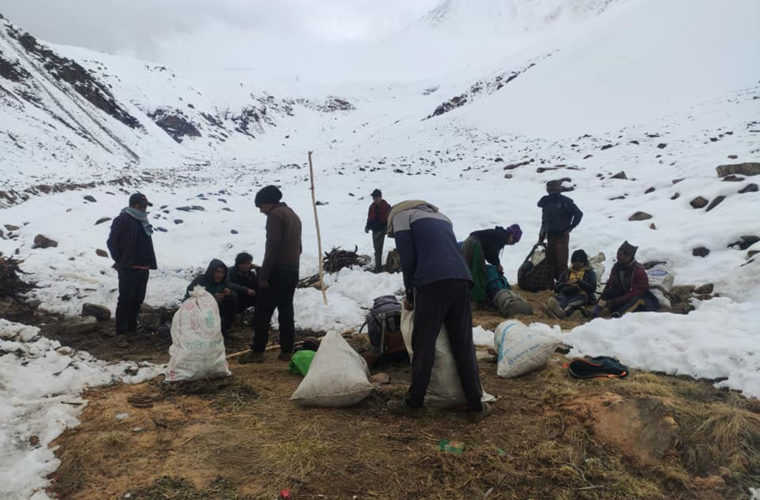
Four yarsa pickers dead in Mugu

French Embassy, DCIS organize two-day International Seminar on Fighting Poaching and Wildlife Trafficking

Universal Language & Computer Institute hosts iFair: A comprehensive event for students preparing for international tests

Gold price touches a record high of Rs 142, 200 per tola

Kathmandu’s temperature likely to hit 33 degrees Celsius today

New species of bird found in Ghodaghodi
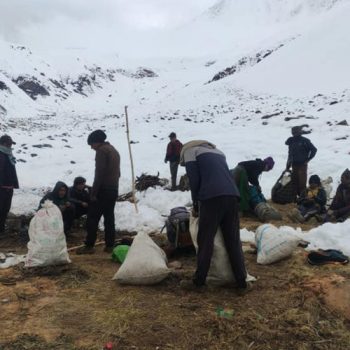
CPN (US) is in favor of present coalition: PM Dahal

Unemployment: The Biggest Challenge For Nepal
Most people in Nepal are self-employed. They are engaged in agriculture, trade, cottage and small-scale industries etc. These people should be helped financially, providing raw materials and technical training.
Hari Prasad Shrestha
Unemployment generally drops down during periods of economic growth and go up during recessions, causing significant pressure on public finances as tax revenue decreases and social support costs increase.
Unemployment generally drops during periods of economic growth and goes up during recessions, causing significant pressure on public finances as tax revenue decreases and social support costs increase.
Unemployment is associated with demand and supply. The economy performs well when production is high and the demand for labor becomes also high, that means unemployment is low. Conversely, when the economy is in doldrums, companies do not want many people that means unemployment is high.
Unemployment rates in the US varied from as low as 1% during World War I to as high as 25% during the Great Depression 1980 followed by the financial crisis 2008 and Covid -19 pandemic 2020 abnormally high. During COVID-19 pandemic, American unemployment saw a huge increase; more than 38 million Americans lost their jobs and applied for government aid, including nearly 4 million people in California, in the eight weeks since the coronavirus pandemic began.
There are a variety of factors that impact unemployment. First is cyclical unemployment; it occurs when there is not enough aggregate demand in the economy to provide jobs for everyone who wants to work.
Another one is frictional unemployment, which reflects the gap between someone voluntarily leaving a job and finding another.
The last one is structural unemployment, which is caused by a mismatch between the skills that workers in the economy can offer, and the skills demanded of workers by employers (also known as the skills gap). Structural unemployment is often brought about by technological changes that make the job skills of many workers obsolete.
In Nepal, the overemphasis on academic performance and the widespread interest among youths in getting a degree has led to the production of qualified but hardly employable graduates. They do not have the technical knowledge and skills.
Our industrial and service sectors are desperately short of skilled professionals. Therefore, the current crisis is not because of joblessness but lack of skills in the organized sector. There are job openings, but not the right candidates.
In year 2021, the unemployment rate in Nepal was 5.1%. It defined the number of unemployed people as percent of the labor force. The labor force includes the people who are either employed or unemployed, i.e., who don't have a job but are actively looking for one. The labor force does not include children, students, prisoners, retirees and does not have an interest in a job.
Currently, the total active workforce in Nepal is around 7 millions and out of it 1.7 million are unemployed. Everyday 1500 youths are going abroad for the jobs. External shocks of permanent labors from bordering India in Nepalese job market are unavoidable factors due to open borders. There are no scientific statistics, but it is estimated that their numbers are close to a million, more than Nepali work in India.
There are limited jobs, 25-30% in the formal sector of government and private institutions in Nepal. A large proportion of work forces are dependent on informal sectors. And every year, over 500,000 young people are entering the labor force.
Jobs are a critical point of the economy. Employment measures the economic health of the economy. GDP could be slower if the unemployment rate is high. It is believed that 4-6% unemployment is natural and more than 6% is supposed to be bad for the economy.
Nepal has been always failed in generating employment to its citizen in minimum level. As result of the declining nature of agriculture and manufacturing sectors are unable to absorb rural unemployed youths, previously which were the highest sources of employment,
Sudur Paschim, Karnali and Madhesh provinces are most hit by unemployment problems, from where hundreds of thousand people go for job to gulf countries and India compared to other provinces.
Age distribution and ethnicity participation are also important in employment. Unemployment rates are high among untouchables, lower castes compared to high castes population. Moreover, urban areas, especially the Kathmandu valley provide high opportunities for better jobs compared to rural areas.
Joblessness and job loss have a far-ranging effect on many parts of society. The families of unemployed people have a very hard time. Prolonged unemployment harms health, especially mental health, and shortens the lifespan. High unemployment can have a self-perpetuating negative impact on businesses and the economic health of the country, which in turn leads to a rise in poverty. Unemployed labor is a waste of the most important economic resource, human labor.
During the Covid-19 pandemic there was a collapse in demand and people lost their jobs. The pandemic did horrible damage to jobs. After the end of pandemic job creation has started, which is still fluctuating up and down.
During the pandemic period the hospitality industry and other important sectors of the Nepalese economy were in great loss and employment in those sectors was very low. After the end of Covid-19 , broad based, sustained revival of jobs seen in construction, hospitality, tourism, health, education and retail sectors.
Some improvement has been observed in narrowing down between male and female participations ratio in labor market. Previously when manufacturing sector was performing well, more male was in employment compared to women and now when service sectors started to dominate the economy, male participation ratio has been decreased and women participation is increasing in labor market.
The main objective of the county’s employment policy should be to increase employment opportunities and the productivity of labor. Government should adopt a policy that provides employment to all people.
It is essential that labor-intensive technology should be encouraged in place of capital-intensive technology.
To increase employment, it is essential to increase production in the agriculture and industrial sectors. Development of small and cottage industries should be encouraged. Moreover, programs like irrigation, roads, flood control, power, agriculture, rural electrification can provide better employment to people.
Decentralization of Industrial activity is necessary to reduce unemployment. If industrial activities are centralized in one place, there will be fewer employment opportunities in underdeveloped areas. So, Govt. should adopt such policies which encourage the decentralization of industrial activity.
And the government, at all levels, must increase their capacity to spend capital expenditure to support job creation.
Reservation in government jobs is playing some roles to narrow down ethnicity imbalances in employment as this sector is very small. Moreover, unemployment benefits and social security allowances have been supportive, even for small numbers of people, to run their daily life.
As there are fewer opportunities for employment in Nepal and its majority of working population are dependent on Gulf countries for jobs. If the Gulf countries stop hiring Nepali workers or send them back, due to unexpected crisis, there is going to be massive street demonstrations by the hordes of jobless people demanding work in Nepal. The government has no idea what the consequences will be. The government should come up with effective macro-economic policies and ensure improvements in the structure and functioning systems of governance to stabilize economic growth and create more jobs.
(Shrestha is a former Under Secretary at the Ministry of Finance and associated with UNDP Africa)

He worked under Ministry of Finance, Nepal as Under Secretary and has been associated with the United Nations Development Program (UNDP) Sierra Leone and South Sudan and UNMISS.

More on Opinion

Latest Magazine

VOL. 17, No. 20, May.24,2024 (Jestha-11. 2081) Publisher and Editor: Keshab Prasad Poudel Online Register Number: DOI 584/074-75

VOL. 17, No. 19, May.10,2024 (Baishak,28. 2081) Publisher and Editor: Keshab Prasad Poudel Online Register Number: DOI 584/074-75

VOL. 17, No. 18, April.26,2024 (Baishak,14. 2081) Publisher and Editor: Keshab Prasad Poudel Online Register Number: DOI 584/074-75

VOL. 17, No. 17, April.12,2024 (Chaitra,30. 2080) Publisher and Editor: Keshab Prasad Poudel Online Register Number: DOI 584/074-75

Essay on Unemployment in Nepal
Unemployment in Nepal is a significant socio-economic challenge that affects individuals and the nation as a whole. The country, nestled in the Himalayas, faces various issues contributing to its unemployment woes.
One primary factor is the rapid population growth, which outpaces job creation. The mismatch between the number of job seekers and available opportunities has led to heightened competition in the labor market. This, coupled with limited industrial diversification, results in an increased unemployment rate.
Agriculture, despite being a crucial sector, cannot absorb the burgeoning workforce. Many Nepalese youths, often possessing educational qualifications, find themselves unable to secure employment in their desired fields. The education-to-employment gap exacerbates the unemployment crisis, highlighting the need for skills that align with market demands.
Nepal’s economy is also heavily reliant on remittances from abroad, with a significant portion of the working-age population seeking employment opportunities overseas. While this provides financial relief to families, it does little to address unemployment within the country. Moreover, it contributes to a brain drain as skilled individuals seek better prospects abroad.
The informal sector plays a vital role in Nepal’s economy, absorbing a substantial portion of the workforce. However, jobs in this sector often lack job security, decent wages, and social benefits. This precarious employment situation perpetuates economic instability for many individuals and families.
Government initiatives to tackle unemployment include skill development programs and entrepreneurship support. However, the impact of these efforts is constrained by resource limitations and the magnitude of the challenge. Effective collaboration between the public and private sectors is crucial for creating a conducive environment for job creation and economic growth.
In conclusion, unemployment in Nepal stems from a complex interplay of factors, including population growth, limited industrial diversification, and the education-to-employment gap. Addressing this issue requires comprehensive strategies that prioritize skill development, encourage entrepreneurship, and foster collaboration between different stakeholders. By tackling the root causes, Nepal can pave the way for a more prosperous and sustainable future for its citizens.
Also read following posts:
Write an Essay about Nepal
Essay on Forest in Nepal
Essay on Importance of Tourism in Nepal
What are the primary causes of unemployment in Nepal?
The main factors contributing to unemployment in Nepal include rapid population growth, limited industrial diversification, and a mismatch between the number of job seekers and available opportunities. Additionally, the education-to-employment gap and reliance on remittances from abroad contribute to the unemployment challenges.
How is the informal sector influencing unemployment in Nepal?
The informal sector plays a crucial role in Nepal’s economy by absorbing a significant portion of the workforce. However, jobs in this sector often lack stability, decent wages, and social benefits. This precarious employment situation contributes to economic instability for many individuals and families, perpetuating the overall unemployment issue.
What initiatives has the Nepalese government taken to address unemployment?
The Nepalese government has implemented various initiatives to tackle unemployment, including skill development programs and support for entrepreneurship. However, the impact of these efforts is constrained by resource limitations. Effective collaboration between the public and private sectors is essential for creating an environment that fosters job creation and sustainable economic growth in the country.
Leave a Comment Cancel reply
Save my name, email, and website in this browser for the next time I comment.
This site uses Akismet to reduce spam. Learn how your comment data is processed .
- Filter for a city
social science baha
2 jun, 2024 --> <--.
- Introduction
- Advisory Group
- Ongoing Research
- Completed Research
- Migration Conference
- Books & Reports
- Journal Articles & Book Chapters
- Policy Briefs
- Fact Sheets
- Bilateral Arrangements
- International Instruments
- National Surveys
- Useful Links
- CESLAM in the News
- Announcements
Home / Employment and Entrepreneurship in Nepal
Npc sets ambitious target of reducing nepal’s unemployment to one-third in next six years.
Year of Publication: 7 July 2023 | My Republica
Published by: CESLAM
KATHMANDU, July 7: The government has set an ambitious target of reducing the country’s unemployment rate to one-third in the next six years.
According to the National Planning Commission (NPC), there are 900,000 jobless people in the country. The NPC has aimed to reduce the number to 300,000 by 2029. It means the government targets to provide jobs to 600,000 people at present along with the newly emerged manpower in the next six years.
Experts said that with no concrete plan to generate the notable number of employment opportunities in the country, the government’s ambitious target is just a populist one.
The NPC says it has forwarded the work to devise a plan to develop human resources for this purpose. A direction committee led by the NPC member Ramesh Poudel has recently finalized its study report on the human development plan.
Representatives from the Prime Minister’s Office, Ministry of Finance, Ministry of Federal Affairs, various universities, private sector schools and the Federation of Nepalese Chambers of Commerce and Industry are among the members of the study committee. The report has come up with the details on the current status of Nepal’s human resource, employed and unemployed people and possible creation of employment opportunities inside the country.
According to Poudel, the detailed report has recommended to the authorities concerned to generate skilled employment opportunities. For this purpose, the report has identified 14 working areas. “After the report is finalized by adding the experts' advice, we will take it to implementation through coordination among the agencies concerned,” he said.
The irony of the NPC’s target is that the country is now reeling under slow economic growth while the private sector has lost confidence. As government revenue collection is well below target, the government has cut off the budget for even the major projects. Similarly, the inflow of foreign direct investment is also not encouraging.
Likewise, the agricultural sector that is giving jobs to a larger number of people is expected to grow only 2.6 percent during 2023-2025, according to the Nepal Development Update of the World Bank dated April 2023.
As the government body announced its ambitious target, around 2,044 individuals are leaving the country daily seeking jobs abroad. In the first 11 months of the current fiscal year, 740,000 individuals received government permits for foreign employment, while the figure is expected to cross 800,000 by the end of this fiscal year.
Published on: 7 July 2023 | My Republica
Back to list
PUBLICATIONS View all

QUICK LINKS
- Interactive Map
- Latest Updates
Announcement View all
Newsletter subscription, get in touch, contact information, centre for the study of labour and mobility.
Social Science Baha 345 Ramchandra Marg, Battisputali, Kathmandu - 9, Nepal Phone: +977-1-4572807 E-mail: [email protected] , Mailing address: GPO Box 25334, Kathmandu, Nepal
Academia.edu no longer supports Internet Explorer.
To browse Academia.edu and the wider internet faster and more securely, please take a few seconds to upgrade your browser .
Enter the email address you signed up with and we'll email you a reset link.
- We're Hiring!
- Help Center

Unemployment in Nepal: Determinants, Constraints and Policy Choices

2013, Fine Print, Kathmandu
Related Papers
Globalisation and Labour in South Asia
Safal Ghimire , Yamuna Ghale
Dilli Raj Khanal
Chhabi Baral
Sushan Acharya
Gender, Jobs and Education: Prospects and Realities in Nepal is part of the series of studies undertaken in Cambodia, Indonesia, Mongolia, Nepal and Vietnam. Consolidating all the country studies, UNESCO Bangkok has published a synthesis report entitled ‘Gender, Jobs and Education: Prospects and Realities in the Asia-Pacific’. In Nepal, as in other participating countries, an empirical study was undertaken in 2013 to understand the relationship between Nepal’s labour market and the education system. Major lens used to see this relationship was gender. This report focuses on the involvement women and men participating in education and the labour market,Nepal’s education system; and female and male students’ perceptions about suitability of different occupations. The report then analyzes the relationship between different dimensions of education and the labour market. The study was conducted among 319 (158 female, 161 male) grade 10 students and 470 women and men engaged in different occupations. Research was conducted in 8 districts including Kathmandu Valley. Nepali women’s participation in education, the labour market, governance and politics has increased over a period a time. Women are gradually entering into occupations that are perceived to be suitable for men only. The political changes and deliberate effort made by the government and non-government sectors have largely contributed to this positive change. However progress is unevenly distributed among caste, ethnicities and locations.
Man B Bk, PhD
Shows the status of child labour in Nepal and its measure to alleviate it.
sd.undp.org
Matias Vernengo
Guna Raj Bhatta
This paper reviews existing structural transformation models and prominent literature and then empirically examines Nepalese economic structure. The research findings reveal that industrial sector is significant to increase per capita income compared to the agriculture and services sectors in Nepal. Moreover, health as indicated by life expectancy and population at working age are found to be significant to increase the income but, education and capital formation are found inconsistent with the theory and international empirics. Likewise, developing agricultural sector looks prerequisite for high and sustainable growth however efforts should be made in increasing investment significantly for the mechanization and modernization of agriculture. Developing infrastructures and fostering favorable business environment are other pre-requisites to support growth. In addition, employment-led service sector development is must with more emphasis on the tourism and human capital development
Aditya Sarkar , Nicolas Serrière
An overview of migration in Nepal
Loading Preview
Sorry, preview is currently unavailable. You can download the paper by clicking the button above.
RELATED PAPERS
Alzahraa Mady
The Open Psychology Journal
Elisa Ansoleaga
Abdi: Jurnal Pengabdian dan Pemberdayaan Masyarakat
Hera Hastuti
Journal of Consumer Research
Chloe Preece
Journal of Technology and Informatics (JoTI)
International Journal of Molecular Sciences
Eleonora Barilli
Journal of Clinical Pediatric Dentistry
Ali Altindag
Ana Elias M
Pakistan Armed Forces Medical Journal
Zia Ul Islam
International Journal of Engineering & Technology
Ahthasham Sajid
Leinora Kaipatty
RAMANA GRANDHI
Clinical Nuclear Medicine
Anupriya Chhabra
Aleksei Kalinkevich
Juan Poblete
Journal of Economics and Business
ayu rulyani
Caio Sousa Mendes
Bushra Huma
Malaria Journal
Florian Girond
Diva Nadiastiti Audina
RELATED TOPICS
- We're Hiring!
- Help Center
- Find new research papers in:
- Health Sciences
- Earth Sciences
- Cognitive Science
- Mathematics
- Computer Science
- Academia ©2024
- Travel & Tourism
- Science & Technology
- Entertainment & Lifestyle
Youth Unemployment: A Serious Problem in Nepal
Nepal’s job market is unable to accommodate a large youth population seeking employment resulting in an increase in foreign employment..

"I have passed my college yet I am unemployed. It is not easy for me and my family. I have been trying to get a job for a while. The situation is really discouraging and now I am planning to move abroad to earn some money. My family is struggling to make ends meet,” says a bachelor graduate Rajesh Mahato.

Nepal Labour Force Survey 2017/18, performed by the Government of Nepal National Planning Commission and Central Bureau of Statistics reveals agriculture to be the most popular employment sector in Nepal, with one in every five people who work employed in agriculture. This confirms that Nepal is in present still an agricultural country in regards to internal employment engagement.
However, industries have a huge role to play in generating mass employment opportunities for youths in Nepal. Announcing the budget for the fiscal year 2022/023 in the Federal Parliament, Finance Minister Janardan Sharma unraveled the government’s plan to make provisions for leasing state owned land for 50 years. These lease provisions are aimed to minimize unemployment by ensuring a favorable industrial environment for industries to grow in Nepal.
Government’s initiative is hoped to make a change in youth unemployment rate but there are many facets to youth unemployment in Nepal that need to be addressed, through youth led discussions and programs.
- Symptoms of depression may be seen years before stroke
- 1 dead, 12 injured in Tianjin gas explosion in north China
- Second-hand bike sale increases
Recent News

Weather update

Four yarsa pickers dead in Mugu

A landslide on the highway

AFGHANISTAN-NANGARHAR-BOAT ACCIDENT

Demand for FNJ election in stipulated date
Additional news.

Two yarsa pickers die from altitude sickness

Surkhet road accident update: death toll rises to four
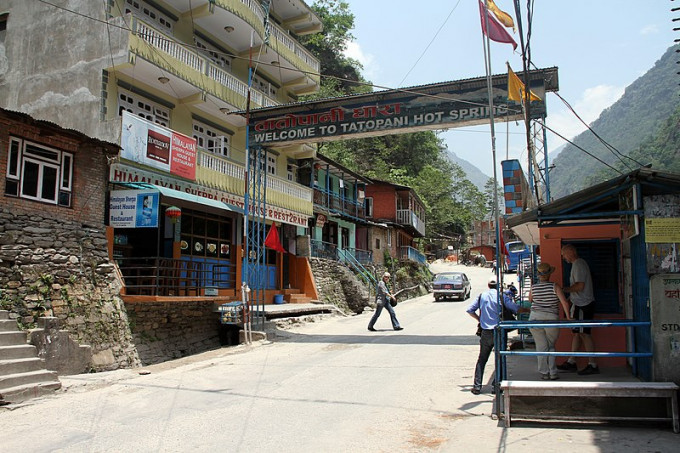
China ready to help upgrade Barhabise-Tatopani road: Ambassador Chen


Bikal Paudel sent to prison
Editor's choice.

HUAWEI-SEEDS FOR FUTURE 2024 PROGRAM

Committee to address complaints of long queue for surgery

International Seminar on Fighting Poaching and Wildlife Trafficking

Prices of petrol, kerosene and diesel reduced
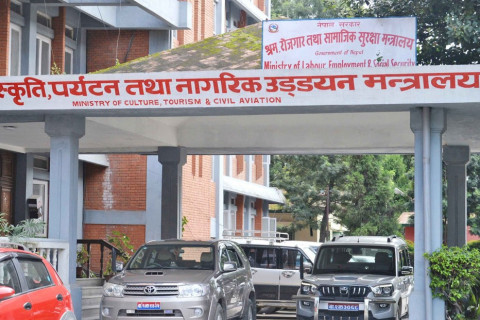
Casino license to be revoked if not renewed on time
Social media, exploration.
- Privacy Policy

- Sunday, 2 June 2024
- Gorkhapatra
- E-paper Archive

Tackling Unemployment Problem

Shyam Prasad Mainali
With a population of around 29 million, Nepal faces acute unemployment problem. Two-thirds of the population is under the age of 30 and the unemployment rate within this demographic group is about 20 per cent. This number is far greater than the national average joblessness. A report suggests that 500,000 people enter the domestic and international labour market every year, a clear indication of the quantitative component of the employment challenge in Nepal. The unemployment issue also has a qualitative aspect as it is mostly confined to informal sectors where earnings and working conditions are subpar. As a result, Nepal faces a situation where it must lower the unemployment rate as well as create meaningful and secure employment opportunities.
A growing population and lack of opportunities have a negative impact on unemployment numbers. As a result of the industry and factory system, cottage industries have been discouraged. The lack of well-paid jobs within the country has also forced many to look at the international labour market. Many Nepali youths find themselves risking their lives to work in the heat of the Gulf countries, South Korea and Malaysia. Manpower companies charge exorbitant fees and exploit hopeful workers who are trying to find opportunities abroad.
Temporary venture
About 32 per cent of GDP is contributed by remittance from migrant workers. Due to this influence of remittance, the policy and priority of the government are diverted toward expediting more jobs abroad instead of encouraging domestic industries, opening factories, and creating environment conducive for investment. Sending youths overseas to benefit the economy is a risky and temporary venture.
The government should have concrete plans to utilise the expertise of returnees. These vulnerabilities came to the fore during the COVID-19 pandemic as many lost their jobs abroad, which severely hampered Nepal's economy. The creation of domestic long-term opportunities is of paramount importance to the country. The education system of the country is also not appropriate as higher education is focused on creating clerks. Whilst the country has enormous agricultural potential, this industry has been abandoned for several reasons. For some, there is a shame attached to working within the agricultural sector and they move to the cities to secure a more socially respectable job.
Agricultural imports from India have also led to a decrease in demand for Nepali products. This has discouraged farmers from the industry. The government has also failed to provide proper support for farmers making agriculture an unattractive means of living. Finally, climate change is also having an inimical effect on agricultural yields and farming has become less lucrative. This has caused people to abandon their land and moving to urban centres for employment. A government job is still very prestigious and, therefore, competition to enter the civil service is incredibly tough as more and more individuals attempt to secure a job within the government. However, limited opportunities mean that the majority are rejected and left unemployed.
On top of the factors listed above, some other determinants of unemployment in Nepal are health, interest rate, inflation rate and political conflict. Education, health, population growth, and inflation are inversely related to the employment of agricultural sectors. Health and political conflict positively affected employment whereas interest rate and level of education affected it negatively.
In the case of the service sector, employment, education, health, population growth and inflation impacted positively but political conflict impacted negatively. The planners and policymakers in the country seem to be indifferent to this problem as they are satisfied merely with the growth of remittance from migrant workers. This pathetic situation worked as a safety valve for those in power who carelessly failed to create employment opportunities for youths. The botched privatisation process in which state-run profit-making industries were sold to the private sector, led to the loss of jobs for Nepalis.
Transferring labour from agriculture and industry to the service sectors is in demand currently. Expanding education in the country seems the most promising way. This could be done by allocating a substantial amount to the education sector. Effective implementation of 'Education for All' programmes is a must.
The opening of vocational education centres should be given priority so that skilled and highly skilled manpower could contribute domestically. Likewise, an increase in employment in non-agricultural sectors is given a greater priority, and human capital investment in health seems highly desirable. By increasing access to health services for poorer and disadvantaged groups of people through the expansion of health networks, the goal of higher life expectancy can be achieved. Population growth and inflation positively increase service sector employment.
Monetary policy
The government could use inflationary monetary policy to boost service sector employment. Decreasing the interest rate could be a good policy to increase the service sector employment. Further investment in the industrial sector furnishes well the better employment opportunity. For a long time, the exchange rate between India and Nepal currencies remained fixed on the open border policy. Implementing this policy, Nepal is facing numerous difficulties regarding the manipulation of inflation. India is too big a trading partner for Nepal for an independent monetary policy. Economists must contribute to the alternative ways to this problem, so it might be a matter of vigorous research.
It is highly necessary on the part of different levels of governments to provide easy loans and grants to entrepreneurs, unemployed youth, differently abled persons, and the recently returned migrant workers to start businesses. Prospects for employment are high in the livestock, agricultural, industrial, tourism, business and trade sectors, apart from micro, small, medium, and larger development projects in the country. But for the betterment of such a dire situation, strong political will is a necessity. Otherwise, increasing trends in muscle and brain drain continues which will ultimately deteriorate the opportunities for employment and the overall economy.
(Mainali is a former government secretary.)

- The Rising Nepal
- Sun, 2 June 2024
Unified Socialist On Horns Of Dilemma?

Increasing Investment In Women’s Health

Aid Is Problematic But Indispensable

- Sat, 1 June 2024
Struggles For Recognition Bolster Inclusion

Values Of Eastern And Western Education
Aging with grace, latest updates.

Unsourced money seized
Damauli-dumre road section obstructed, weather to remain partly to generally cloudy throughout country today, rs. 1.5 billion budget allocated for mirchaiya-katari-ghumri road, more from author.

Protecting endangered pangolin: A conservation effort in Makwanpur

CM Yadav urges acceleration in construction of irrigation dam

Hostage families call for a cease-fire deal pushed by Biden

CREASION Nepal collects 25 tonnes waste from Sunkoshi

National sport volleyball’s biggest tournament, 8th PM Cup, kicks off

- Essay Series
- Expert Speak
- Commentaries
- Young Voices
- Issue Briefs
- Special Reports
- Occasional Papers
- GP-ORF Series
- Books and Monographs
Browse by Topics
Progammes & centres.
- SUFIP Development Network
- Centre for New Economic Diplomacy
- Centre for Security, Strategy & Technology
- Urban Studies
- Neighbourhood Studies
- Inclusive Growth and SDGs
- Strategic Studies Programme
- Energy and Climate Change
- Economy and Growth
- Raisina Dialogue
- Cape Town Conversation
- The Energy Transition Dialogues
- CyFy Africa
- Kigali Global Dialogue
- BRICS Academic Forum
- Colaba Conversation
- Asian Forum on Global Governance
- Dhaka Global Dialogue
- Kalpana Chawla Annual Space Policy Dialogue
- Tackling Insurgent Ideologies
- Climate Action Champions Network
- Event Reports
- Code of Conduct
- ORF Social Media Advisory
- Committee Against Sexual Harassment
- Declaration of Contributions
- Founder Chairman
- Work With Us
- Write For Us
- Intern With Us
- ORF Faculty
- Contributors
- Global Advisory Board
- WRITE FOR US

Unemployment remains the biggest challenge for Nepal
Author : Hari Bansh Jha
Expert Speak Raisina Debates
Published on dec 18, 2020.

Before it is too late, it is necessary on the part of the federal, provincial and local governments to provide easy loans and grants to entrepreneurs, unemployed youth, differently-abled persons and the recent returned migrant workers to start businesses.
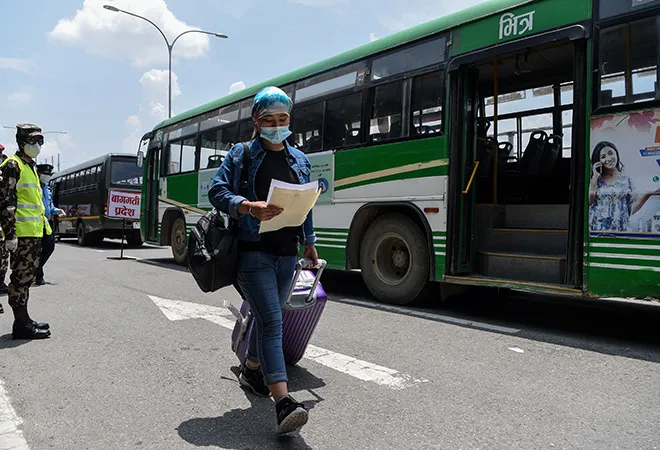
Never in the past had the unemployment problem been as severe in Nepal as it happens to be after the outbreak of COVID-19, which infected 250,916 people and caused the death of 1,743 people as of 17 December. In the absence of jobs at home, quite a sizeable chunk of the total population has been leaving the country for foreign destinations, including India, the Middle East, Malaysia, South Korea and Japan. This has created a huge shortage of labour in the agricultural, industrial, construction, tourism, business and trade sectors affecting the growth of the country.
However, the exact figure of people migrating to a foreign land for jobs, especially through the informal channels, is not known. Of Nepal’s total population of nearly 30 million, 3.5 to 8 million of the Nepalese, particularly from the hills are working in India while about 6 million of the Nepalese migrant workers are engaged in jobs in countries other than India.
In the absence of jobs at home, quite a sizeable chunk of the total population has been leaving the country for foreign destinations, including India, the Middle East, Malaysia, South Korea and Japan.
On account of the COVID-19 pandemic, 81 percent of the workers in the informal sector and 1.4 million in home-based work are at severe risk of losing jobs. As per the estimate made by the International Labour Organisation (ILO), 1.6 to 2 million jobs have been disrupted in Nepal in such sectors as wholesale and retail trade, manufacturing, construction, transport, accommodation, food services, real estate and administration.
There are also reports that quite a large number of the youth are leaving the country for foreign countries on visit visas with the intention of ending up there as undocumented workers. To check this trend of moving outside the country illegally, the Department of Immigration of Nepal has proposed English language communication proficiency as one of the basic criteria to qualify for going abroad on visit visas. But it is feared that such a move is illogical. It is not fair to check those workers bound for foreign destinations on so flimsy a ground as not being proficient in the English language. Hence, a fresh proposal has been made where buying insurance worth NPR 2 million , rather than English language knowledge, should be the criteria for a person to go abroad on a visit visa.
During the COVID-19 pandemic, there was a great expectation that the government would come out with some concrete policies and programmes to create jobs for those workers who were laid off.
A recent survey conducted by Nepal Rastra Bank, the central bank of the country, found that after four months of the nationwide lockdown, the pandemic led to the closure of 61 percent of businesses . This made hundreds of thousands of workers jobless, apart from severely affecting the production and supply chain . During the pandemic, 22.5 percent of the employees in the business sector were laid off. Nearly 40 percent of the staff were laid off in the hotel and restaurant sector and 30.5 percent of the employees were laid-off in the small and medium scale enterprises . The salaries of the employees were also deducted in some of these industries. Many business firms failed to pay rental fees and interests on the loans of the banks .
During the COVID-19 pandemic, there was a great expectation that the government would come out with some concrete policies and programmes to create jobs for those workers who were laid off. Towards this end, the government not only announced a repatriation programme for the migrant workers, but it also introduced a stimulus package for reviving the units that were hit by the pandemic.
Estimates are that more than half a million workers returned to the country from India during lockdown.
The government announced that it would create nearly 700,000 jobs in the current year under the Prime Minister Employment Programme, vocational skills training and other schemes. It also allocated a hefty amount of money for job creation in the agricultural and construction sector for the needy youth and also for those migrant workers who returned to the country after they were laid off. Estimates are that more than half a million workers returned to the country from India during lockdown. Additionally, about 151,000 people returned to the country after they lost their jobs in other foreign countries . But in actual practice, the government contributed very little to create jobs in the country as it was largely plagued by an internal power tussle in the ruling political party and also in border-related issues with India and China.
So, out of frustration, most of the migrant workers returned back to India from different crossing points along the Nepal-India border after the festival season like the Dasain and Tihar . Those people had no option but to leave the country for India because of the lack of prospects for employment opportunities within the country.
Unfortunately, the job creation for the youth has not been a priority for the present government in Nepal or, so to say, for any of the governments in the past. The planners and policymakers in the country are indifferent to this problem as they are satisfied merely with the growth of remittance from migrant workers, which accounts for more than over one-fourth of Nepal’s Gross Domestic Product (GDP) of US$ 30 billion . This has also worked as a safety valve for those in power who failed to create jobs for the youths.
If this problem is not addressed in the near future, it could pose a severe challenge to peace and stability in the country.
Even though the unemployment problem continues to be aggravated during the COVID-19 pandemic period, it is a pity that no significant effort was made by the government or even the private sector to generate employment opportunities on a mass scale for the youth. If this problem is not addressed in the near future, it could pose a severe challenge to peace and stability in the country.
Before it is too late, it is necessary on the part of the federal, provincial and local governments to provide easy loans and grants to entrepreneurs, unemployed youth, differently-abled persons and the recent returned migrant workers to start businesses. Prospects of employment are high in the livestock, agricultural, industrial, tourism, business and trade sectors, apart from micro, small, medium and larger development projects in the country. Sharing Indian and Chinese experience on this front could also be important. Such a move might help revive the ailing Nepalese economy whose rate of economic growth is as low as near zero per cent. But for all this, strong political will is necessary.
- Privacy & Data Protection
- Neighbourhood
- Migrant Worker
The views expressed above belong to the author(s). ORF research and analyses now available on Telegram! Click here to access our curated content — blogs, longforms and interviews.

Hari Bansh Jha
Hari Bansh Jha is a Visiting Fellow at ORF. Formerly a professor of economics at Nepal's Tribhuvan University, Hari Bansh’s areas of interest include, Nepal-China-India strategic ...
Publications

AI as a catalyst for sustainable development
Sustainable development, jun 01, 2024.

Investigating the ecological decline in the Sundarbans
Climate, food and environment | climate change.
Essay on Unemployment
Here we have shared the Essay on Unemployment in detail so you can use it in your exam or assignment of 150, 300, 500, or 1000 words.
You can use this Essay on Unemployment in any assignment or project whether you are in school (class 10th or 12th), college, or preparing for answer writing in competitive exams.
Topics covered in this article.
Essay on Unemployment in 150-250 words
Essay on unemployment in 300-500 words, essay on unemployment in 500-1000 words.
Unemployment is a pressing issue that affects individuals and societies globally. It refers to the state of being without a job or a source of income despite actively seeking employment. Unemployment poses significant challenges, both economic and social, for individuals and communities.
The consequences of unemployment are far-reaching. Financial instability decreased living standards, and a loss of self-esteem and confidence are common outcomes. Individuals may face difficulties in meeting their basic needs, providing for their families, and planning for the future. Moreover, unemployment can lead to social unrest, increased crime rates, and a strain on public resources.
Addressing unemployment requires a multifaceted approach. It involves creating favorable economic conditions, promoting job growth through investment and entrepreneurship, and providing individuals with the necessary skills and training for employment opportunities. Furthermore, social safety nets, such as unemployment benefits and job placement services, play a crucial role in supporting those who are unemployed.
Efforts to reduce unemployment should also focus on addressing structural issues in the labor market, promoting fair employment practices, and encouraging inclusive growth. Additionally, fostering a supportive environment for innovation, research, and development can stimulate job creation and economic prosperity.
In conclusion, unemployment is a complex issue with wide-ranging implications for individuals and societies. It demands comprehensive strategies that encompass economic policies, skill development, and social support systems. By addressing unemployment effectively, we can strive towards a society where individuals have access to fulfilling work opportunities and can contribute to the overall well-being and prosperity of their communities.
Title: Unemployment – The Economic and Social Challenge
Introduction :
Unemployment is a pressing issue that affects individuals, families, and societies worldwide. It refers to the state of being without a job or a viable source of income despite actively seeking employment. High levels of unemployment have significant economic and social consequences, making it a critical challenge to address.
Causes of Unemployment
Unemployment can stem from various factors. Economic downturns and recessions often result in job losses as businesses struggle to sustain their operations. Technological advancements and automation have also led to job displacement, particularly in industries that rely heavily on manual labor. Globalization and outsourcing practices have contributed to the relocation of jobs to countries with lower labor costs, creating unemployment in certain regions.
Impact of Unemployment
Unemployment has far-reaching implications. Financial instability resulting from joblessness can lead to increased poverty rates, limited access to healthcare, and housing insecurity. It also strains social cohesion, as unemployed individuals may experience psychological distress, low self-esteem, and a loss of purpose. Moreover, long-term unemployment can lead to skills deterioration and a loss of work experience, making it increasingly difficult for individuals to re-enter the labor market.
Addressing Unemployment
Addressing unemployment requires a multi-faceted approach:
Economic Policies: Governments should implement policies that promote economic growth, investment, and job creation. This includes fostering a business-friendly environment, reducing bureaucratic barriers, and providing incentives for entrepreneurship and innovation. Additionally, targeted industry development strategies can identify sectors with growth potential and encourage job creation in those areas.
Education and Skills Development: Investing in education and skills development is crucial to equip individuals with the necessary competencies for available job opportunities. Collaboration between educational institutions, employers, and government agencies can help bridge the skills gap and ensure that individuals are prepared for the changing demands of the labor market. Upskilling and reskilling programs can help unemployed individuals acquire new skills and improve their employability.
Job Creation Initiatives: Governments should prioritize job creation initiatives, particularly in sectors with high growth potential. This can be achieved through infrastructure projects, green technology investments, and support for small and medium-sized enterprises. Public-private partnerships can also play a significant role in stimulating job creation and economic development.
Social Safety Nets: Establishing robust social safety nets is crucial to support those facing unemployment. Unemployment benefits, healthcare coverage, and access to retraining programs can help individuals meet their basic needs and regain economic stability while actively seeking employment. Such support systems alleviate the financial burden and provide a safety net during challenging times.
Conclusion :
Unemployment is a complex and persistent socioeconomic challenge that demands comprehensive solutions. By implementing effective economic policies, investing in education and skills development, promoting job creation, and providing social safety nets, societies can mitigate the impacts of unemployment and strive toward a more equitable and prosperous future. It is essential to address this issue with urgency, as reducing unemployment rates not only improves individual well-being but also fosters economic growth and social cohesion.
Title: Unemployment – A Dual Crisis of Economic Stability and Human Dignity
Unemployment is a complex and pervasive issue that affects individuals, families, and societies at large. It refers to the state of being without a job or a viable source of income despite actively seeking employment. High levels of unemployment have severe economic and social consequences, making it a pressing challenge that demands effective solutions and interventions. This essay aims to provide a comprehensive analysis of the causes, impacts, and potential remedies for unemployment, recognizing its multifaceted nature and the need for a holistic approach.
I. Understanding Unemployment
Unemployment can be classified into various types based on its causes and duration. Structural unemployment arises from shifts in the economy, such as technological advancements or changes in market demand, rendering certain jobs obsolete. Cyclical unemployment, on the other hand, is caused by economic downturns and fluctuations in business cycles. Frictional unemployment occurs when individuals are between jobs or in transition, while seasonal unemployment is linked to seasonal variations in certain industries.
II. Economic Implications
Unemployment poses significant challenges to the economy at both micro and macro levels. At an individual level, it leads to a loss of income and financial instability, making it difficult for individuals to meet their basic needs, contribute to the economy, and plan for the future. Moreover, the lack of economic opportunities leads to a decrease in consumer spending, which negatively impacts businesses and reduces their profitability. This, in turn, can trigger downsizing, closures, and a negative cycle of job losses, further exacerbating the unemployment crisis.
On a macroeconomic scale, high unemployment rates hinder economic growth and development. The decline in consumer spending decreases demand for goods and services, creating a ripple effect throughout the economy. Governments also face challenges in generating tax revenues, leading to reduced public investment in infrastructure, education, and healthcare. Additionally, increased government spending on unemployment benefits and social support places a strain on public finances, potentially leading to higher budget deficits or cuts in other areas.
III. Social Consequences
Unemployment not only impacts individuals’ economic well-being but also has profound social implications. Financial instability resulting from joblessness can lead to increased poverty levels, housing insecurity, and limited access to healthcare, further exacerbating social inequalities. The psychological toll of unemployment cannot be overlooked, as individuals may experience feelings of anxiety, depression, low self-esteem, and a loss of purpose. This can strain relationships, lead to social isolation, and create a sense of hopelessness among the unemployed.
Furthermore, long-term unemployment can result in skills deterioration and a loss of work experience, making it increasingly difficult for individuals to re-enter the labor market. This perpetuates a cycle of unemployment and hinders upward social mobility, reinforcing existing inequalities and social divisions.
IV. Causes of Unemployment
Unemployment is influenced by a combination of economic, structural, and policy-related factors. Economic downturns, such as recessions or financial crises, can lead to widespread job losses as businesses struggle to stay afloat. Technological advancements and automation also contribute to job displacement, particularly in industries that rely heavily on manual labor. Globalization and outsourcing practices can result in the relocation of jobs to countries with lower labor costs, further aggravating unemployment in certain regions.
Inadequate education and skills training also contribute to unemployment. Rapid changes in the labor market demand individuals with up-to-date skills and knowledge. Failure to adapt and provide relevant training can leave individuals ill-equipped to secure employment in sectors with higher demand.
V. Addressing Unemployment
Effectively addressing unemployment requires a comprehensive approach that combines economic policies, education and skills development, job creation initiatives, and social safety nets. Some potential strategies include:
- Economic Policies
- Education and Skills Development
- Job Creation and Support
- Social Safety Nets
Economic Policies:
Governments should implement policies that foster a conducive business environment, promote investment, and stimulate job creation. This may involve reducing bureaucratic barriers, providing incentives for entrepreneurship and innovation, and investing in infrastructure projects to generate employment opportunities.
Education and Skills Development:
A focus on education and skills training is crucial to equip individuals with the necessary competencies for available job opportunities. Collaboration between educational institutions, employers, and government agencies can help bridge the skills gap and align education with labor market needs. Upskilling and reskilling programs should be promoted to ensure individuals can adapt to evolving job requirements.
Job Creation and Support:
Governments should prioritize job creation initiatives in sectors with growth potential, such as renewable energy, healthcare, technology, and infrastructure development. This can be achieved through investment incentives, public-private partnerships, and targeted industry development strategies. Additionally, providing job placement services, vocational training, and financial assistance to unemployed individuals can enhance their employability and facilitate their transition back into the workforce.
Social Safety Nets:
Establishing robust social safety nets is essential to provide temporary relief and assistance to those facing job loss. Unemployment benefits, healthcare coverage, and support for retraining can help individuals meet their basic needs and regain economic stability while actively seeking employment. Such measures help alleviate the negative impacts of unemployment and support individuals during periods of transition.
Unemployment is a dual crisis of economic stability and human dignity, impacting individuals and societies on multiple levels. The economic and social consequences of unemployment demand comprehensive and coordinated efforts to address its causes and mitigate its impacts. By implementing effective economic policies, investing in education and skills development, promoting job creation, and providing robust social safety nets, societies can strive towards reducing unemployment rates and creating a more inclusive and prosperous future for all.
Related Posts

Essential Elements of Valid Contract (Explained With Examples)

What is World Population? Main Causes, Effects, Top 20 Countries
Unemployment Essay
500+ words essay on unemployment.
Unemployment is a serious problem among young people. There are thousands of people who do not have any work to do and cannot find work for themselves. Unemployment refers to the situation where a person wants to work but cannot find employment in the labour market. One of the major reasons that contribute to unemployment is the large population of India and the limited availability of resources. In this essay on unemployment, we will discuss all these issues responsible for unemployment in India and how we can overcome this problem. Students must go through this unemployment essay to get ideas on how to write an effective essay on the topic related to unemployment. Also, they can practice more CBSE essays on different topics to boost their writing skills.
Unemployment is measured by the unemployment rate, defined as the number of people actively looking for a job as a percentage of the labour force. The unemployment rate for the year 2013-14 in rural India was 4.7%, whereas it was 5.5% for urban India. In the short term, unemployment significantly reduces a person’s income and, in the long term, it reduces their ability to save for retirement and other goals. Unemployment is a loss of valuable productive resources to the economy. The impact of job loss in rural and regional areas flows through the local community, damaging businesses.
Reason for Unemployment
An unemployed person is one who is an active member of the labour force and is seeking work but is unable to find any work for himself. There are multiple reasons behind the unemployment of a person. One of them is the slow economic growth, due to which jobs in adequate numbers are not created. Excessive dependence on agriculture and slow growth of non-farm activities also limit employment generation. Unemployment in urban areas is mainly the result of substantial rural migration to urban areas. This has also resulted in a labour workforce in cities. The lack of technology and proper machinery has also contributed to unemployment.
The present educational system is based on theoretical knowledge instead of practical work. Thus, it lacks the development of aptitude and technical qualifications required for various types of work among job seekers. This has created a mismatch between the need and availability of relevant skills and training. This results in unemployment, especially among the youth and educated people with high degrees and qualifications. Apart from it, the lack of investment and infrastructure has led to inadequate employment opportunities in different sectors.
Steps to Eliminate Unemployment
Various strategies and proposals have been implemented to generate employment. Many Employment programmes and policies have been introduced and undertaken to boost self-employment and help unemployed people engage in public works. The Government of India has taken several policy measures to fight the problem of unemployment. Some of the measures are the Mahatma Gandhi National Rural Employment Guarantee Act (MGNREGA), National Skill Development Mission, Swarna Jayanti Shahari Rozgar Yojana (SJSRY), Regional Rural Banks (RRBs).
Despite the measures taken by the government, India remains a country experiencing severe unemployment problems. It can be resolved by imparting education in such a way that youth get the necessary skills so as to get employment easily. Setting up various vocational training and vocational courses for undergraduate and postgraduate students will help in finding employment for youth. The government needs to emphasise these courses at the primary level and make them a compulsory part of the curriculum to make students proficient in their early stages of life. Career counselling should be provided within schools and colleges so that students can choose a better career option based on their interests and ability. Government should create more job opportunities for the youth and graduates.
India is a fast-growing economy. There is an enormous scope for improvement in the unemployment sector. The various measures and steps taken by the government to increase the employment rate have succeeded to a great extent. The widespread skill development programmes have gained popularity across the nation. With better enforcement of the strategies, the employment level can be significantly improved. Although, we have to go a long way before we can say that all the people in India will get employment.
We hope this essay on unemployment must have helped students in boosting their essay-writing skills. Keep learning and visiting the BYJU’S website for more study material.
Frequently Asked Questions on Unemployment Essay
Is unemployment still an existing problem in india.
Yes, unemployment is still a serious issue in our country. Steps need to be taken by the government and also by the youngsters in India to improve this situation.
Is it necessary for schoolchildren to be informed about unemployment?
Students at this young age should definitely be informed about this topic as it will motivate them to study and aim for higher scores in exams.
What points are to be added to an essay topic on Unemployment?
Add details about different age groups of people suffering from this state of employment. You can focus on the fact that poverty is an indirect reason for unemployment and vice-versa. Then, suggest steps that can be taken to bring about an improvement in education and increase the percentage of literacy.
Leave a Comment Cancel reply
Your Mobile number and Email id will not be published. Required fields are marked *
Request OTP on Voice Call
Post My Comment
Register with BYJU'S & Download Free PDFs
Register with byju's & watch live videos.
Global unemployment set to decline slightly this year: UN labour agency

Facebook Twitter Print Email
Global unemployment numbers will fall modestly this year, but unequal access to jobs is still a problem worldwide, particularly for women in poorer countries, the International Labour Organization (ILO) said in a new report published on Wednesday.
The updated World Employment and Social Outlook report predicts that the global unemployment rate will be 4.9 per cent in 2024, slightly down from 5.0 per cent in 2023.
This represents a revision from the previous projection in January of 5.2 per cent for this year, which is expected to flatten in 2025, with unemployment remaining at 4.9 per cent.
‘Uneven playing field’
The report, however, points to a persistent lack of employment opportunities.
Currently, the number of people worldwide without a job but who want to work stands at 402 million. This includes 183 million people who are counted as unemployed.
Women, especially those in low-income countries, are disproportionately affected by the lack of job opportunities.
“Despite our efforts to reduce global inequalities, the labour market remains an uneven playing field, especially for women,” said ILO Director-General Gilbert F. Houngbo.
Inclusive policies needed
In low-income countries, more than one in five women, 22.8 per cent, are unable to find work, compared with almost one in seven men, or 15.3 per cent.
This contrasts with high-income countries, where the rate is nearly 10 per cent for women and 7.3 per cent for men.
Furthermore, although women in high-income countries earn 73 cents for every dollar earned by men, this figure drops to just 44 cents in low-income countries.
The report found that family responsibilities are behind much of these differences, “indicating that women’s disproportionate share of unpaid care work plays a major role in shaping gender employment gaps globally”.
Mr. Houngbo called for countries to work towards inclusive policies that take into considerations of all persons in the workforce.
“We must place inclusion and social justice at the core of our policies and institutions. Unless we do, we will fall short of our objective to ensure strong and inclusive development," he said.

SDG 8: ENSURE DECENT WORK FOR ALL
- Take immediate measures to eradicate forced labour, modern slavery and human trafficking
- Protect labour rights, and promote safe, secure environments for all workers
- Sustain per capita economic growth and at least seven per cent gross domestic product growth per annum in least developed countries
- Achieve higher levels of economic productivity through diversification, technology and innovation
- Improve global resource efficiency in consumption and production
- Decouple economic growth with environmental degradation
Global unemployment is expected to fall below pre-pandemic levels, although not in low-income countries

IMAGES
VIDEO
COMMENTS
There are many reasons for unemployment. The population is increasing rapidly. The factory system is killing cottage industries. Manual workers cannot find jobs. Nepal migrant workers sent $8.1 billion in 2018 marking if the 19th biggest beneficiary of funds sends by migrants around the world, according to the report released by World Bank.
The burden of unemployment. We cannot afford off-and-on lockdowns and prohibitory orders that jeopardise the economy. Many poor Nepali youths in western Nepal are returning to India for work as there are no jobs in the country. Mohan Budhaair/TKP. A recent Nepal Rastra Bank survey which looked into the effects of Covid-19 on Nepal's economy ...
Nepal's overall unemployment rate has remained a concern, with the latest data indicating an unemployment rate of 10.6 percent (World Bank, 2021). However, the youth unemployment rate, which primarily affects individuals between the ages of 15 and 29, stands at a staggering 19.4 percent (Central Bureau of Statistics, 2021).
In year 2021, the unemployment rate in Nepal was 5.1%. It defined the number of unemployed people as percent of the labor force. The labor force includes the people who are either employed or unemployed, i.e., who don't have a job but are actively looking for one. The labor force does not include children, students, prisoners, retirees and does ...
December 28, 2023 by admin. Essay on Unemployment in Nepal. Unemployment in Nepal is a significant socio-economic challenge that affects individuals and the nation as a whole. The country, nestled in the Himalayas, faces various issues contributing to its unemployment woes. One primary factor is the rapid population growth, which outpaces job ...
week s hows that the re is n o unemployment problem as such in Nepal. As shown in Table 2.1, the unemployment rate which was 4.9 per cent in 1996 reduced to 3.8 per cent in 2004 and fur ther went
The Nepal government sees addressing the social and economic challenges of youth, and leveraging their social economic prospects, as critical for the country's economic growth and development. This priority is reflected, for example, in the government's latest national economic program document, the 14th Periodic Plan, and the Youth Vision ...
KATHMANDU, July 7: The government has set an ambitious target of reducing the country's unemployment rate to one-third in the next six years. According to the National Planning Commission (NPC), there are 900,000 jobless people in the country. The NPC has aimed to reduce the number to 300,000 by 2029. It means the government targets to ...
This study will help to understand the situation of the unemployed and political party's importance to the unemployment problem. 17 Chapter-II Literature Review 2.1 World Context Frances Fox Piven and Richard Cloward gave a detailed account of the movement of unemployed American workers during the Great Depression.
Gender, Jobs and Education: Prospects and Realities in Nepal is part of the series of studies undertaken in Cambodia, Indonesia, Mongolia, Nepal and Vietnam. Consolidating all the country studies, UNESCO Bangkok has published a synthesis report entitled 'Gender, Jobs and Education: Prospects and Realities in the Asia-Pacific'.
The performance of the employment sector has been even poorer. Unlike the growth of employment at a rate of 2.7 per cent during the period of 1981 to 1991, such a growth rate has decelerated to just 0.66 percent during the period 2001- 2011 (CBS, 2012). Nepal is seen putting in a lot of effort to decrease unemployment..
Lekhanath Pandey Kathmandu. 07/17/2020. The pandemic has hit Nepal's labor market hard, with many workers inside and outside the country losing their jobs. If not addressed effectively, experts ...
Global unemployment is expected to rise by 2.5 million by. 2020 (ILO,2019). As per the Nepal labor force survey 2017/2018, the youth unemployment. rate is decreasing due to the outmigration of the ...
Over 60 percent of Nepal's population are youths, however youths compared to the unemployment rate of the country overall, have significantly higher unemployment rates. The International labor organization (ILO) reports, over 19 percent of youths in Nepal are unemployed. Currently, Nepal has a significant adolescent population.
This paper investigates the relationship between the unemployment rate and economic growth in Nepal. Gross Domestic Product (GDP) at constant price has been used as an indicator of economic growth. The data regarding GDP and unemployment rate were collected from World Bank database for the study. Correlation and Regression analysis were used to study the nature and degree of effect of economic ...
ARTICLE INFO ABSTRACT. To dwarf the unemployment problem in Nepal, th e state should keep agriculture on the top of th e priority list. It. should design reformatory programs; provide technical ...
With a population of around 29 million, Nepal faces acute unemployment problem. Two-thirds of the population is under the age of 30 and the unemployment rate within this demographic group is about 20 per cent. This number is far greater than the national average joblessness. A report suggests that 500,000 people enter the domestic and international labour market every year, a clear indication ...
Observer Research Foundation | ORF
Nepal made significant progress in reducing poverty between 1995- 1996 and 2003-2004, despite political instability. However, poverty incidence remains high-estimated at about 31% in 2003- 2004-and inequality also increased during this period. Based on the Gini coefficient, inequality rose from about 34.2 in 1995-1996 to about 41.4 ...
Essay on Unemployment in 150-250 words. Unemployment is a pressing issue that affects individuals and societies globally. It refers to the state of being without a job or a source of income despite actively seeking employment. Unemployment poses significant challenges, both economic and social, for individuals and communities.
The unemployment rate for the year 2013-14 in rural India was 4.7%, whereas it was 5.5% for urban India. In the short term, unemployment significantly reduces a person's income and, in the long term, it reduces their ability to save for retirement and other goals. Unemployment is a loss of valuable productive resources to the economy.
Out of the 30 million population of Nepal, nearly 1-2% of the people are unemployed. It has led to the rise in poverty level, the spread of diseases, and other socio-economic problems. Illiteracy is not the major cause of this problem. Indeed, lack of technical education is. Schools in Nepal have been developing minds that get employed in other ...
This video is all about how to write essay on Unemployment problem in Nepal.Thanks for watching this video.lot's of luv
Global unemployment numbers will fall modestly this year, but unequal access to jobs is still a problem worldwide, particularly for women in poorer countries, the International Labour Organization (ILO) said in a new report published on Wednesday. The updated World Employment and Social Outlook report predicts that the global unemployment rate ...